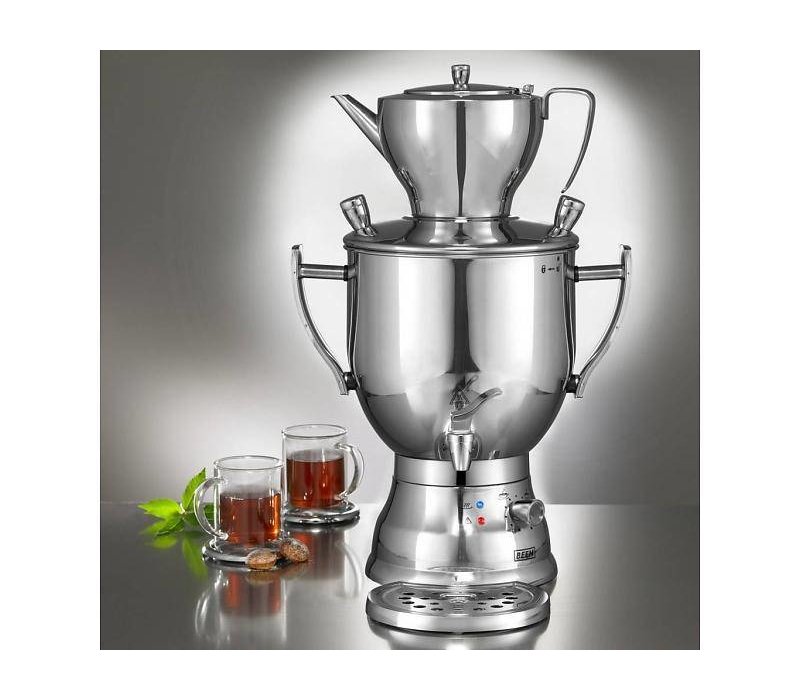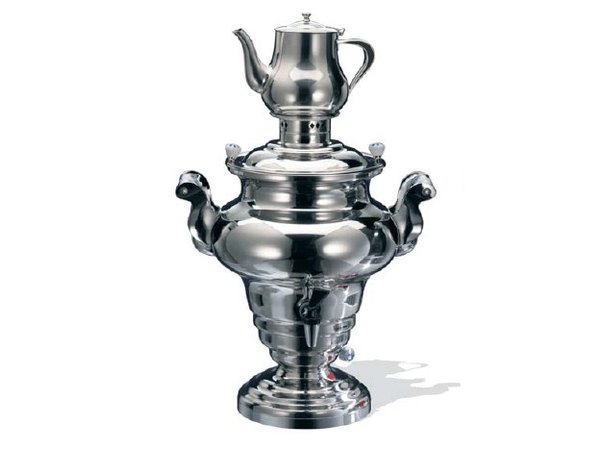

Consequently samovar prices and designs varied depending on the social class they were sold to. However, later craftsmen started to pay particular attention to details and materials. The first samovars had little to no decorations. As samovar was ideally suited to the Russian climate it slowly, but surely, became a household staple throughout Russia in the next 70 years. The devices were very expensive, however, and once a family bought a samovar they used it for years and even passed it down to the next generation. The process of samovar manufacturing was long and laborious and consisted of several stages with individual masters specializing in certain parts of samovar construction. Hence more and more craftsmen opened their own shops there and Tula became the center of samovar production in Russia. This town was known for metal-workers and arms industry. Tula SamovarĪccording to one of the versions, samovar was invented by Lisitsyn brothers in Tula, Russia, in 1778. Similar tea containers were also used in Turkey, Iran and Central Asia. In the 18th century in England, also known for love for tea-drinking, people used so called tea urns with the design similar to samovars but with different construction. He then ordered Russian craftsmen to replicate its construction and design. The second version is the traditional kettle from the Netherlands that was brought to Russia by Peter the Great.

One of them is possibly Chinese huo guo or hot pot brought to Russia when China started to export large amounts of tea to Russia. Like most other inventions samovar has its predecessors. The tea-drinking custom contributed to the growing need and popularity of samovars. The first mention of Russian samovar and samovar production in Russia dates back to 1745. The origins of the samovar are not too clear.

Tea is served mixing tea concentrate from teapot known as zavarka with hot water from the main container. A small teapot is placed on top of a samovar to steep with the hot air coming from the pipe. Samovar is a large metal urn in which water is boiled and kept hot by means of a special vertical pipe in the middle of a samovar filled with solid fuel such as pine cones, charcoals, and wood chips, which are set on fire. Russian Samovar literally means “self-boiler” derived from Russian “сам” - self and “варить” - to boil. And that is the reason Samovar was brought and became hugely popular in Russia. And Russian people like their tea very, almost scolding hot, which can be easily explained by Russia’s extreme climate: a hot drink is essential for surviving long and severe winter.

One of the indispensable elements of Russian culture, way of life, and history is, by all means, tea-drinking. Now, samovars are much more than just devices for boiling water - these stunning items embody the true fusion of art and craft and are often used as unique elements of décor, adding unparalleled charm that reminisces of rustic ingenuity of the faraway times and of the inimitable ambience of intimate comfort of homes from the gracious, simpler times, now long gone and all but forgotten by most of us. The word sa-mo-var literally translates to “boils itself.” This utensil for boiling water for tea is over 3,000 years old and has been an integral part of the Russian culture for many centuries.


 0 kommentar(er)
0 kommentar(er)
